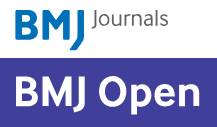Authors
Affiliations
Abstract
One of the main health problems in many societies is the increased opium abuse, which was found to be correlated with many problems like cardiovascular disease. This study aimed to evaluate the correlation of opium use with blood lipoproteins as the risk factor of CVD. This was a cross-sectional study conducted on participants of the first phase of the PERSIAN Cohort study who were aged between 35 and 70 years old. Demographic characteristics; history of smoking, alcohol, and opium consumption; medical history; and medications were asked and the related checklists were filled out. The levels of physical activity and fat intake were also registered. As well, lipoprotein profiles were investigated by blood sampling. The linear and logistic regression was used to analyze the relationship between opium and lipid profile and the statistical significant level was considered as < 0.05. Among 9300 participants with a mean age of 48.06 ± 9.44 years old, 49.6% of them were men. About 24.1% of the participants used opium. In the linear regression models, unlike TG (β = 2.2, p = 0.36), total cholesterol (β = – 2.5, p = 0.02), LDL (β = – 2.0, p = 0.04), and HDL (β = – 1.0, p = 0.04) were significantly lower in people who used opium compared to the others. In the logistic regression models, abnormal level of LDL (OR = 0.78, p = 0.003) and total cholesterol (OR = 0.82, p = 0.008) were less in people who used opium compared to the others. This study showed that there is a correlation between opium usage and lower levels of total cholesterol and LDL; however, the lower level of HDL in normal range was seen in opium users. Considering the current evidences, most of them showed the increased risks of ischemic heart disease, heart attack, hypertension, cerebrovascular disease, and cancer in opium users. Therefore, Healthcare providers and patients should be noticed about the deleterious effects of opium consumption on various vascular events. In addition, it is necessary for managers and policy makers of the health care system to take the necessary measures to raise the level of awareness and health literacy of the general public about the high-risk side effects of opium use and to take necessary and effective strategies to prevent and reduce its use.

